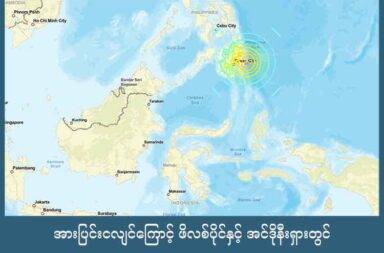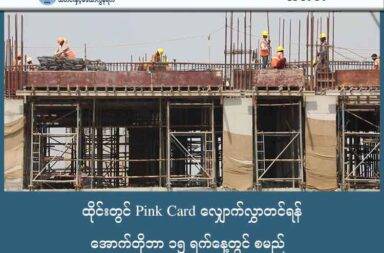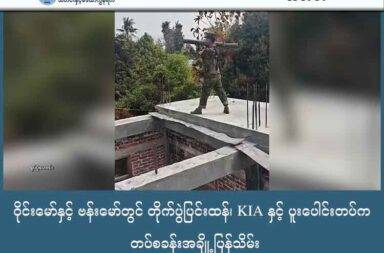Northern Alliance Rejects Military Accusation of Involvement in Drug Trade
An AA spokesperson calls the Tatmadaw’s drug busts ‘just for show’ and alleges that military officials are the ones involved in narcotics production.
By NETWORK MEDIA GROUP (NMG)
Monday, August 19, 2019
Members of the Northern Alliance of ethnic armed organizations have rejected an allegation by the Burma Army that their recent coordinated attacks on strategic military and infrastructure locations were in retaliation for the seizure of a major drug haul in northern Shan State.
The office of the Tatmadaw’s commander-in-chief reported that attacks on August 15 in Pyin Oo Lwin, Mandalay, and Nawng Khio, northern Shan State, were carried out by the Ta’ang National Liberation Army (TNLA), Myanmar National Democratic Alliance Army (MNDAA), and the Arakan Army (AA) in anger over military crackdowns on narcotics.
The army pointed to seizures of drugs and related paraphernalia worth more than 16 billion kyat (US$10.5 million) in late July in Shan State’s Kutkai Township, and of drugs worth 5 billion kyat ($3.3 million) in Rathedaung Township, Rakhine State on August 8 as the motivation for the ethnic armed groups’ attacks.
Government spokesperson Zaw Htay pointed out in a press conference on Friday that one of the sites for the Northern Alliance strike was a drug checkpoint at a tollgate in Nawng Khio and referred to the subsequent destruction of an x-ray scanner in the gunfire, supporting the military’s claim.
The Northern Alliance rejected the accusation.
“We have been eliminating drugs in our area. We have done many more anti-drug campaigns in northern Shan State than the government. We are completely unconnected with the seizure of huge amounts of drugs in Kutkai,” Maj Mai Aik Kyaw, of the TNLA’s information department, told NMG.
He described the TNLA’s anti-narcotics campaigns, which involve the destruction of poppy plantations and arrests of drug dealers, as “a national duty.”
“We have been working on anti-narcotics campaigns since our organization was formed. There are no poppy plantations west of the Muse-Mandalay highway, except in the Pangsay PMF’s area,” Maj Mai Aik Kyaw explained, referring to a military-backed People’s Militia Force.
He said that drugs being sent into TNLA-controlled areas were arriving from the towns, out of their territory.
The AA also made similar statements.
“They cracked down on some drug factories in northern Shan State because they didn’t get an equal share,” Khaing Thukha of the AA said, referring to the Tatmadaw’s recent narcotics bust. “It’s just a show. Some high-ranking officials in the army are connected with drug issues, as well as PMF leaders. Whenever they seize drug [factories], later on they will turn out to be ownerless.”
Khaing Thu kha described the strategy of the military in blaming the ethnic armed organizations for the drug trade as a way of trying to “gain advantage from their defeat,” following the Northern Alliance attacks.
Regarding government spokesperson Zaw Htay’s focus on the destruction of the x-ray scanner at the drug checkpoint, Khaing Thukha said that the machine was not destroyed intentionally but in the course of intense fighting.
“He understands military warfare. When there is fighting, we cannot say, ‘don’t shoot at this, don’t shoot at that’ or ‘don’t touch that.’ It’s very difficult to control the situation, especially when exchanging fire,” the AA spokesperson explained.
The five sites for the Northern Alliance’s coordinated attacks included the military’s Defense Services Technological Academy, an army camp, a police camp, and highway tollgates.


